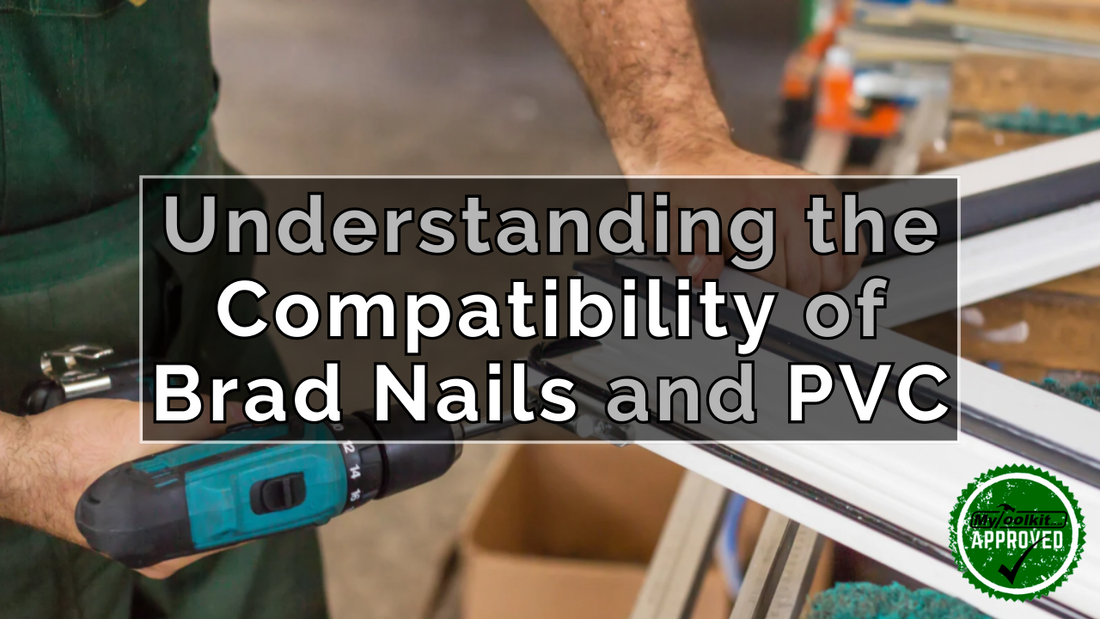Understanding the Compatibility of Brad Nails and PVC
When it comes to fastening materials together, brad nails are a popular choice due to their versatility and ease of use. But can you fire brad nails into PVC? The answer is yes, but there are some important considerations to keep in mind.


The Length of the Brad Nail is Most Important
One crucial factor to consider when using brad nails with PVC is the length of the nail. The general rule of thumb is that the length of the brad should be double the depth of the material you're fixing - I.e., If you're fastening a 10mm PVC trim for wainscoting, your brad nail should be a minimum of 20mm. This tends to ensure that the nail securely holds the PVC without penetrating too far or causing damage.
Why Size Matters
Using a brad nail that is too short may not provide enough holding power, leading to a weak connection that can easily come apart. On the other hand, using a nail that is too long can cause the PVC to crack or split, leading to unnecessary material wastage.
Considerations for Brad Nailing PVC
Aside from the length of the brad nail, there are a few other considerations to keep in mind when using brad nails with PVC...
- Choose the right gauge: Brad nails come in different gauges (diameters), with smaller numbers indicating thicker nails. Choosing a 23 gauge headless pin will indefinitely require a second fix of adhesive or silicone but will provide a seamless finish without running the risk of splitting the PVC. Choosing a 16 or 15 gauge brad nail will not require a second fix but their larger head will be visible once secured and if the PVC is thin/brittle, the risk of splitting is high. The most popular brad nail our customers use is 18 gauge. 18 gauge brad nails provide a solid middle ground between 23g and 15g where in most cases, a second fix isn't required and their heads are only really visible when inspecting the PVC up close.
- Choose the right Brad Nail finish: The finish of the brad nail is also important when working with PVC. Stainless steel brad nails are often the preferred choice due to their corrosion resistance. This is especially crucial if the PVC will be exposed to outdoor elements or high humidity.
- Getting your angles right: The angle at which you fire the brad nail into the PVC can affect the overall strength and stability of the fastening. It is recommended to fire each brad into the material at a differing angle for optimal results.
- Density of the material: The density of the material that you're fixing your PVC to should be assessed. If fixing PVC to soft wood, any brad nail will easily penetrate but something like plaster wall is much denser. In these circumstances , you should think about using a smaller gauge (thicker) brad nail to avoid bending.
Conclusion
In summary, you absolutely can fire brad nails into PVC, but it's important to consider the length of the nail and follow the recommended guidelines. By using the correct length, gauge, and finish, you can achieve a strong and secure connection without compromising the integrity of the PVC. Remember to always test on a scrap piece of PVC before working on your actual project to ensure the best results.
Should you have a big project coming up and remain uncertain on which brad nail you need, get in touch with us and we'd be more than happy to provide live or video demonstrations (subject to you supplying us with sample material).
If you're still confused or have any further questions, don't hesitate to get in touch. You can reach us on 0333 8000 345, info@mytoolkit.co.uk or DM us on our social media channels @mytoolkitonline.
P.s., Subscribe to our newsletter & get useful hints, tips & tricks directly to your inbox!
** When using nails, staples or any tooling equipment, it's important to follow safety guidelines and use them responsibly.





